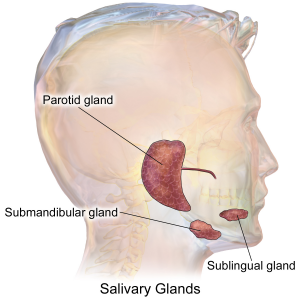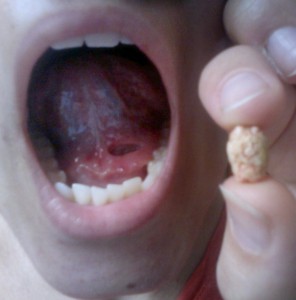Salivary glands endoscopy (sialendoscopy)
The salivary glands are the glands secreting saliva. They are the parotid glands, sublingual and submandibular glands in addition to multiple small salivary glands, called minor glands.

The salivary glands can increase in volume (tumefaction), be painful, or have functioning troubles: either by failure or by hyper-functioning (hypersialorrhea).
In case of canal or gland obstruction, saliva cannot evacuate and the gland swells. Symptoms are often related to meals and are more or less important.
Salivary endoscopy (or sialendoscopy) has become the test of choice for obstructive diseases of salivary ducts’ treatment (mainly calculus and ductal stenosis). It allows proper diagnosis and treatment in the course of the same appointment. Thus, keeping the gland in place as well as its function and avoiding complications of conventional surgery (nerve risk, hematoma…)
For children care of recurrent parotitis, studies have shown the efficacy of interventional sialendoscopy, with a net reduction in subsequent inflammations by combining canal dilatation and steroids irrigation.
The instrumentation consists of a semi-rigid endoscope allowing moving within the ductal branching, and a rinsing system, which has the advantages of dilating the canal, cleaning the optic and evacuating intraductal debris.
Calculus ablations are currently completed with semi-rigid ultrafine endoscopes with a 1.1mm diameter and 2 canal operators (irrigation and instrumentation). It is performed under local or general anesthesia. The lithiasis is displayed while the miniaturized instruments are descended from the operating canal, thus the stones are then extracted under visual control by natural means. In some cases, the use of laser is essential to fragment the calculus and remove the small pieces.
The indications for this procedure are specified by a specialized pretherapeutic assessment.
The combined extractions and intrabuccal techniques are performed by intrabuccal means and leave no scar. They can be considered depending on local or general anesthesia indications. This conservative gesture to the gland is well tolerated.

The Polyclinique Centre-Ville is proud to have in her team Dr. Olivier Abboud, a pioneer in diagnostic and therapeutic salivary endoscopy in Quebec. He has the expertise to perform sialendoscopy on children and on adults as well.
